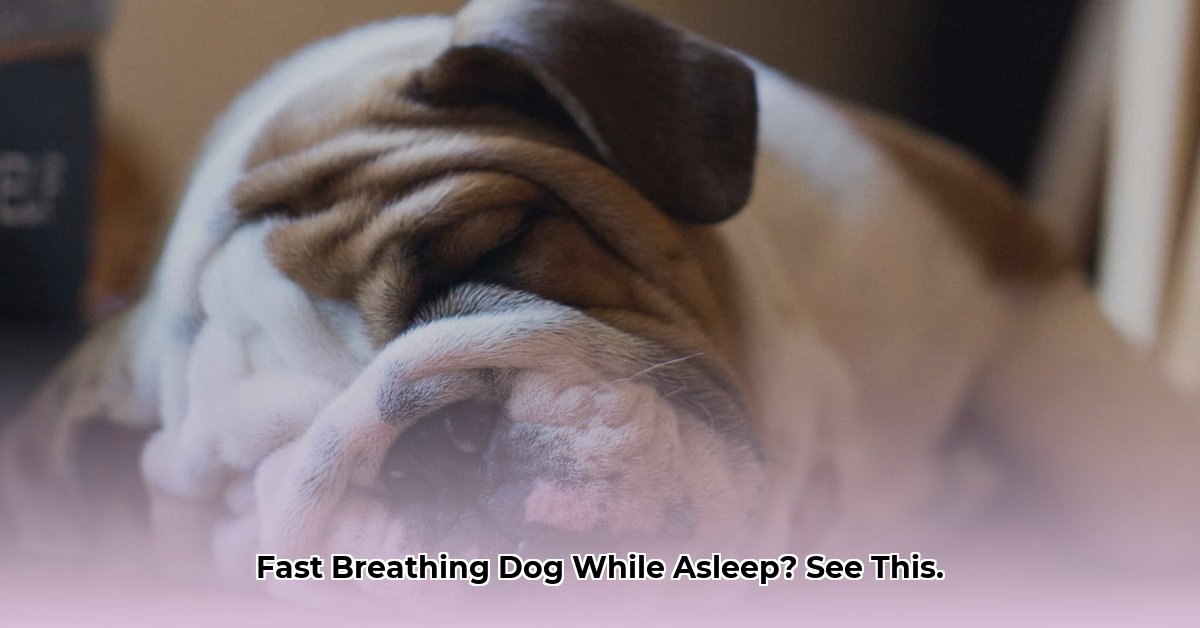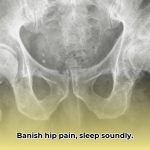Ever glance at your peacefully sleeping dog and notice their chest pumping unusually fast? It’s natural to feel concerned. This guide helps you discern normal rapid breathing from something more serious, offering clear instructions on assessing your dog’s respiratory rate and providing actionable advice.
Assessing Your Dog’s Respiratory Rate
Knowing your dog’s respiratory rate can provide valuable insights into their well-being. Here’s a simple guide:
-
Ensure Restful Sleep: Wait until your dog has been soundly asleep for at least 15 minutes to avoid capturing an elevated rate due to recent activity or dream-induced twitches.
-
Observe Chest Movement: Gently watch your dog’s chest rise and fall. Each complete cycle constitutes one breath. Avoid touching your dog, as this may alter their breathing pattern.
-
Count for 30 Seconds: Using a timer, count the breaths within a 30-second timeframe.
-
Calculate Breaths Per Minute: Multiply the counted breaths by two to determine your dog’s respiratory rate. Recording this information can be useful for future reference and comparison.
Understanding Normal Breathing and Benign Causes
A resting dog’s normal respiratory rate typically ranges from 10 to 30 breaths per minute. However, various factors can influence this:
-
Puppies and Small Breeds: Like human babies, puppies breathe faster than adults. Smaller dog breeds also tend to have naturally higher respiratory rates.
-
Brachycephalic Breeds: Breeds with short noses (e.g., Pugs, French Bulldogs) often breathe a bit faster due to their airway anatomy.
-
Dreams and Recent Activity: Just as with humans, dreams can alter breathing patterns. Similarly, post-exercise, a dog’s breathing will likely be elevated as they cool down.
Serious Causes for Concern
While some variation is normal, persistent rapid breathing (tachypnea) at rest—consistently over 30 breaths per minute—may indicate an underlying issue. Watch for these red flags:
- Labored Breathing: Struggling to breathe, using abdominal muscles, extended neck.
- Noisy Breathing: Wheezing, whistling, crackling sounds.
- Gum Color Changes: Pale, bluish, or greyish gums suggest circulatory problems.
- Open-Mouth Breathing (at rest): Dogs primarily breathe through their noses; open-mouth breathing at rest signals potential airway distress.
- Lethargy/Appetite Loss: Combined with rapid breathing, these suggest potential illness.
- Other Respiratory Symptoms: Coughing, sneezing, nasal discharge.
- Sudden Changes: Any abrupt shift in breathing, even within the “normal” range, warrants veterinary consultation.
Potential Underlying Conditions and When to Seek Immediate Care
Several conditions can cause rapid breathing. This table lists some possibilities, but remember, only a veterinarian can diagnose:
| Condition | Key Symptoms | When to Seek Immediate Care |
|---|---|---|
| Heart Failure | Persistent rapid breathing, coughing, weakness, exercise intolerance, bluish gums, abdominal swelling | Immediately |
| Respiratory Disease | Labored breathing, coughing, wheezing, nasal discharge | Immediately |
| Anemia | Rapid breathing, pale gums, lethargy, weakness | Immediately |
| Heatstroke | Rapid panting, excessive drooling, bright red gums, vomiting, staggering, collapse | Immediately – life-threatening |
| Asthma/Bronchitis | Coughing (often dry), wheezing, breathing difficulty | Immediately, especially if struggling to breathe |
| Pneumonia | Rapid, shallow breathing, coughing (may have mucus), fever, lethargy | Immediately |
| Lung Cancer | Persistent coughing, weight loss, breathing difficulty | As soon as possible |
| Cushing’s Disease | Increased breathing, thirst, urination, pot-belly, hair loss | Consult your veterinarian |
| Obesity | Increased breathing effort, heat intolerance | Consult your veterinarian |
| Pain/Injury | Whimpering, guarding, changes in behavior | Consult your veterinarian |
| Anxiety/Stress | Rapid panting, pacing, restlessness | Consult your veterinarian |
When to Contact Your Vet
Contact your veterinarian immediately if your dog exhibits any of the red flags mentioned above, especially labored breathing, blue gums or significant changes in their normal demeanor or behavior. Be ready to provide details about your dog’s breed, age, history, medications, and observed symptoms. In severe respiratory distress cases, seek emergency veterinary care without delay.
Breed, Age, and Environmental Influences
Several factors can influence respiratory rates. Smaller breeds and puppies tend to have faster rates. Brachycephalic breeds, with their shortened airways, also breathe a bit more rapidly. Environmental factors like temperature, allergens, stress, and anxiety can all affect breathing. Current research is examining the dynamic interplay of these elements and their potential contributions to breathing irregularities in dogs.
Conclusion
Monitoring your dog’s breathing is crucial. Regular observation helps you establish a baseline and recognize deviations from the norm. If you have any concerns about your dog’s breathing, contact your veterinarian promptly. Early intervention can make a significant difference.
Disclaimer: This information is for educational purposes only and does not constitute veterinary advice. Always consult a qualified veterinarian for diagnosis and treatment.
- Heal Hip Labral Tears Without Surgery: A Guide to Non-Surgical Recovery - July 6, 2025
- Side Sleeper’s Guide: Banish Hip Pain, Sleep Soundly - July 6, 2025
- Get Fuller Hips with Hip Fillers: Sculptra Guide - June 30, 2025
















